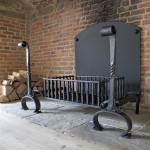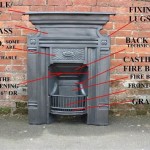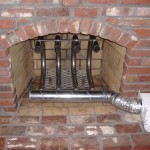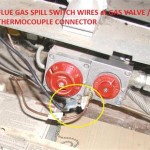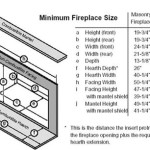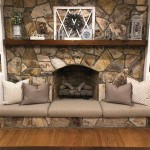Gel Fireplace Corner Unit: A Comprehensive Guide
Gel fireplaces, particularly those designed as corner units, offer a unique blend of aesthetic appeal and practical supplemental heating. These fireplaces utilize a clean-burning gel fuel, making them a convenient and often more environmentally friendly alternative to traditional wood-burning fireplaces. Corner units, specifically, are designed to maximize space utilization, fitting snugly into corners of rooms to create a focal point without dominating the entire wall.
This article provides a comprehensive overview of gel fireplace corner units, discussing their advantages, considerations for installation, maintenance requirements, safety precautions, and factors to consider when selecting the most suitable unit for a given space. The information presented aims to equip readers with a thorough understanding of these fireplaces to make informed decisions regarding purchase and use.
Advantages of Gel Fireplace Corner Units
Gel fireplace corner units present several advantages over traditional fireplaces and other alternative heating solutions. These advantages encompass aspects of installation, environmental impact, aesthetics, and overall convenience.
One significant advantage is the ease of installation. Unlike conventional fireplaces that require extensive construction, including chimneys and gas lines, gel fireplaces are typically freestanding or require minimal assembly. Corner units, being self-contained, largely eliminate the need for structural alterations, making them ideal for apartments, condominiums, and homes where installing a traditional fireplace is impractical or prohibited. The corner design inherently simplifies placement, utilizing otherwise often unused spaces.
Another key advantage is the clean-burning nature of gel fuel. Gel fuel is comprised primarily of isopropyl alcohol, which, when burned, produces only water vapor and a small amount of carbon dioxide. This results in minimal soot, ash, or smoke, eliminating the need for chimney cleaning and reducing the potential for indoor air pollution. This cleaner combustion contributes to a healthier indoor environment and reduces the environmental impact associated with heating.
Aesthetically, gel fireplace corner units offer a versatile design option. They are available in a wide range of styles, from modern and minimalist to rustic and traditional. Many units feature decorative logs, stones, or other embellishments to mimic the appearance of a real wood-burning fireplace. The flame produced by gel fuel is also visually appealing, providing a realistic flickering effect that enhances the ambiance of the room. The corner placement further accentuates the focal point, drawing the eye and creating a cozy atmosphere.
Finally, gel fireplaces offer a level of convenience not typically found in other fireplace types. The fuel is easy to store and handle, and igniting the fire is as simple as lighting the gel fuel canister with a match or lighter. Extinguishing the fire is also straightforward, often involving simply covering the canister to deprive it of oxygen. These features contribute to a user-friendly experience, making gel fireplaces an accessible option for individuals of all technical abilities.
Installation and Safety Considerations
While gel fireplace corner units are generally easy to install, careful consideration must be given to safety and proper placement. Improper installation or misuse can pose fire hazards and compromise indoor air quality.
Prior to installation, it is crucial to select a location that is level and stable. Uneven surfaces can cause the fireplace to tip over, increasing the risk of fire. The unit should also be placed away from flammable materials such as curtains, furniture, and paper. A minimum clearance of at least three feet should be maintained between the fireplace and any combustible items. Furthermore, the unit should not be placed directly on carpeting or other flammable flooring without proper insulation.
Ventilation is an important consideration, although gel fireplaces do not produce significant amounts of smoke or carbon monoxide, some ventilation is still necessary to dissipate the water vapor and carbon dioxide produced during combustion. Opening a window or using a ventilation fan can help to ensure adequate airflow. In smaller, poorly ventilated rooms, prolonged use of a gel fireplace may lead to a build-up of humidity, so monitoring humidity levels is advisable.
Safe handling of gel fuel is paramount. The fuel canisters should be stored in a cool, dry place away from direct sunlight and heat sources. When adding fuel to the fireplace, it is essential to ensure that the flame is completely extinguished and the unit has cooled down. Never add fuel to a burning or hot fireplace, as this can cause a dangerous flare-up. Spilled gel fuel should be cleaned up immediately with a damp cloth. Keep gel fuel out of reach of children and pets.
It is strongly recommended to install a smoke detector and carbon monoxide detector in the room where the gel fireplace is located. Although gel fireplaces produce minimal carbon monoxide, these detectors provide an added layer of safety in case of any unforeseen issues. Regularly inspect the fireplace for any signs of damage or wear, and promptly address any necessary repairs. Following these safety guidelines can help to ensure the safe and enjoyable use of a gel fireplace corner unit.
Maintenance and Fuel Selection
Maintaining a gel fireplace corner unit is a relatively simple process, but regular upkeep is necessary to ensure optimal performance and longevity. Proper fuel selection is also crucial for maximizing the aesthetic appeal and minimizing potential hazards.
Routine cleaning is an essential maintenance task. The exterior of the fireplace can be cleaned with a damp cloth to remove dust and fingerprints. The decorative elements, such as logs or stones, can also be cleaned periodically to maintain their appearance. It is important to avoid using harsh chemicals or abrasive cleaners, as these can damage the finish of the fireplace. The burner area should be inspected regularly for any debris or residue, and any buildup should be carefully removed.
The type of gel fuel used can significantly impact the performance and aesthetic quality of the fireplace. It is advisable to use only gel fuel that is specifically designed for fireplaces. Some gel fuels may contain additives that produce undesirable odors or excessive soot. Look for gel fuels that are labeled as clean-burning and odorless. The burn time of gel fuel can vary depending on the brand and the size of the canister. Choose a fuel with a burn time that is appropriate for the intended usage. Always follow the manufacturer's instructions for fuel storage and usage.
While the gel fireplace itself requires minimal maintenance, paying attention to the surrounding area is also important. Keep the area around the fireplace clear of clutter and flammable materials. Regularly check the smoke detector and carbon monoxide detector to ensure that they are functioning properly. Addressing any minor issues promptly can prevent them from escalating into more serious problems. By following these maintenance and fuel selection guidelines, users can ensure that their gel fireplace corner unit remains a safe, efficient, and aesthetically pleasing addition to their home.
Selecting the appropriate size of gel fuel canister and the number of canisters to burn simultaneously is dependent on the size of the room and the desired heat output. Smaller rooms may only require a single canister, while larger rooms may benefit from multiple canisters for increased warmth. It's important to avoid overheating the room, as this can lead to discomfort and potentially compromise indoor air quality. Start with a smaller number of canisters and gradually increase the number as needed to achieve the desired level of warmth. Monitoring the room temperature can help to determine the optimal number of canisters to use.
The material composition of the gel fireplace should also be considered during maintenance. Some units are made of metal, while others are constructed from wood or composite materials. Metal units are generally more durable and easier to clean, while wood or composite units may require more careful handling to prevent scratches or damage. Understanding the material composition of the fireplace will help to inform the appropriate cleaning and maintenance procedures.
Finally, proper storage of the gel fireplace during periods of non-use is essential. If the fireplace is not going to be used for an extended period of time, it should be thoroughly cleaned and covered to protect it from dust and moisture. The gel fuel canisters should be removed and stored in a safe location away from heat sources. Properly storing the fireplace will help to prolong its lifespan and ensure that it is ready for use when needed.

Churchill Corner 3750 O Oak Gel Fireplace Just Fireplaces

Churchill Corner 3750 O Oak Gel Fireplace Just Fireplaces

Flex 122lc Bxr Left Corner Fireplace Insert Ecosmart Fire

Flex 122lc Bxr Left Corner Fireplace Insert Ecosmart Fire

Corner Ventless Gas Fireplace Visualhunt

Discontinued Suel Freemont Brass Trim Corner Gel Fireplace

Churchill Corner 3750 O Oak Gel Fireplace Just Fireplaces

Flex 42rc Right Corner Fireplace Insert Ecosmart Fire

Discontinued Suel Freemont Black Trim Corner Gel Fireplace

Flex 86rc Bxr Right Corner Fireplace Insert Ecosmart Fire


